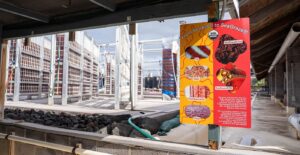Editor’s Note: Jeff Caldwell is content marketing manager at Lessing-Flynn, a marketing and advertising agency based in Des Moines, US. Previously, he was editor of Successful Farming and the High Plains Journal. The views expressed in this article are personal.
Agriculture business owners around the US can’t find the right qualified labor to get the job done. When a utility contractor hangs a ‘help wanted’ sign on the door, the plethora of applicants that there would have been 20 years ago just don’t exist today, and those who do apply have a lot more options than they used to. Low national unemployment is also a big driver.
As an Iowa ag marketing guy, I have the privilege to talk with farmers, ranchers, contractors, and business owners. These conversations have taught me a lot about how these occupations differ – but more importantly, how they’re similar.
A certified arborist in California, a rancher in Indiana, and a heavy equipment contractor in Louisiana: While their positions have specific, unique challenges, there are some that are universal among them and scores of other sectors of our economy today.
If you get too far into the weeds on this topic of labor shortages, you’ll find an array of opinions on what happened. Some say today’s workforce is lazy. Some say today’s workers won’t do the job for anything less than the highest possible pay. Others blame the shortfall on immigration policy, and a lack of available workers because of shifts in immigrant populations. But I don’t talk politics (or religion) at the dinner table.
Though potential solutions range widely based on each potential cause, technology has a lot to do with sustaining and growing this critical component of the US economy. Just like what the original assembly line did for Henry Ford’s Model T, today’s mechanization, advanced manufacturing, and innovations like artificial intelligence and machine learning are rapidly becoming capable of doing jobs that were once only in human hands.
Continued evolution
Technology isn’t ‘taking our jobs’ — it’s accomplishing tasks that enable us to do new and different jobs as our economy and culture evolve. The same thing happened when agriculture first became mechanized. Farmers now sit in high-tech tractor cabs, and don’t use horses to pull a one-row moldboard plow anymore. We’re simply continuing to evolve.
One example is in how farmers and contractors maintain machinery. Soon, gone will be the day when a tractor or implement breakdown automatically requires a visit from a dealership service technician, or a trip into town. The same will be true for the service techs; they’ll be able to conduct maintenance remotely, showing customers what they need to do with a level of detail once only possible in person. It’s called ‘digital twin’ technology.
Through a set of visual sensors, machinery schematics, and mock-ups, the service tech can be on the farm without actually being on the farm. Operators could potentially stand in front of their machines in the field, on the job, or in the maintenance shop, with augmented reality images projected to show the difference between a fully functioning machine and the one in front of them. Between the service technician’s expertise, the operator’s understanding of the specific breakdown, and the direct comparison of a broken-down and functional machine, the problem can be diagnosed and repaired, all while minimizing downtime.
In addition, digital twin technology will one day revolutionize the manufacturing process by augmenting human operators’ capabilities, building new efficiencies and entirely changing processes in factories around the world.
Yes: this will likely lead to fewer workers involved in the process of assembling tractors and skid steers. But it will also create demand for workers who can operate and manage augmented reality systems. This is because these technologies – at least for the foreseeable future – will require a human being to operate them and oversee things like manufacturing and maintaining machinery.
Attracting and retaining talent
There are marketing implications to this change, too, though not in the traditional business-to-consumer sense. A machinery company will create new manufacturing and maintenance processes that will be specific to individual pieces of equipment. Though the basic skillsets required of manufacturers and technicians today will remain critical in the future, they’ll also be called upon to learn how digital twin systems will work to accomplish those jobs.
A center-pivot sprinkler manufacturer will have an entirely different set of qualifications for its digital twin technicians than a baler manufacturer, all based specifically on the equipment on which people will be working — and more importantly, the equipment on which their customers will be working.
These changes will require new internal marketing initiatives to attract qualified people to apply for these jobs. Companies will need to do more to retain good people, too. That may mean a service tech will telecommute to a farm shop or dealership from 200 miles away. The successful companies in this new digital twin era will be those who can develop the internal marketing and training programs to first attract, but then retain, the right people by providing the right training and instruction.
The same will be true for customers. Farmers may not be the quickest customer segment to embrace a change like digital twin technology, so the right education will be what shows customers the value, based on factors like productivity, efficiency and cost. The machinery companies who can best convey these messages to their customers will be those who flourish when digital twins become the industry standard.
It’ll be a few years before digital twin technology will be considered the new standard in the farm equipment sector. But given its potential for both manufacturers and their customers, it’s likely to gain traction as the technology becomes cheaper and more accessible. What will you need to do to get ready?




